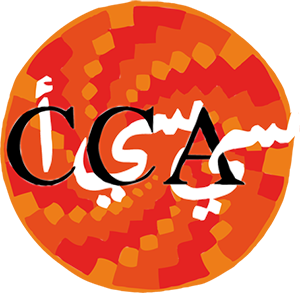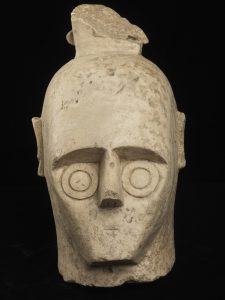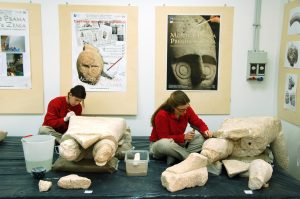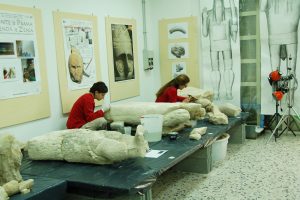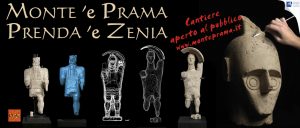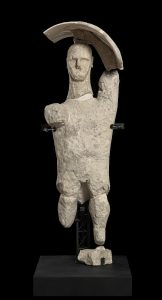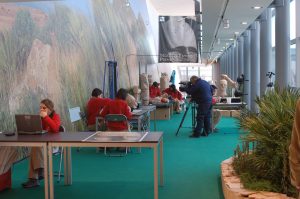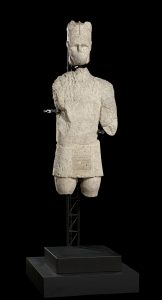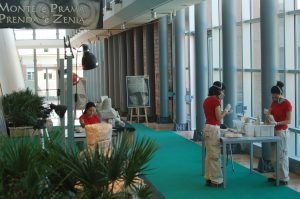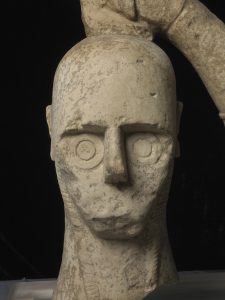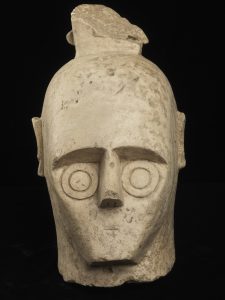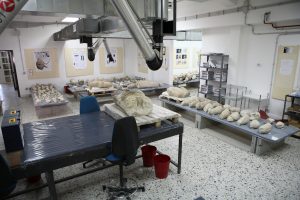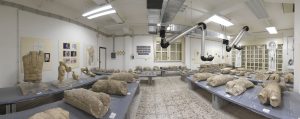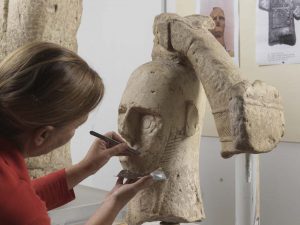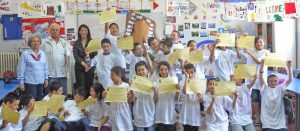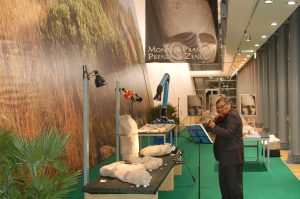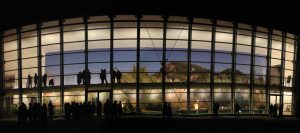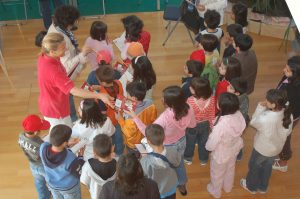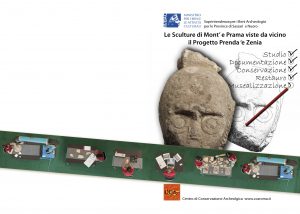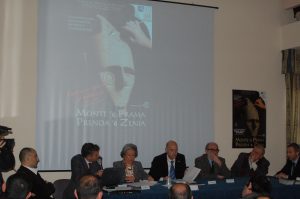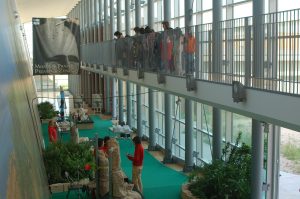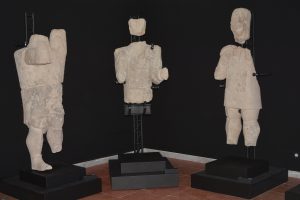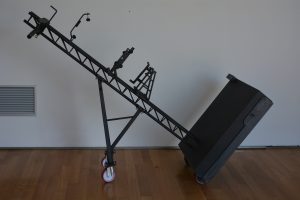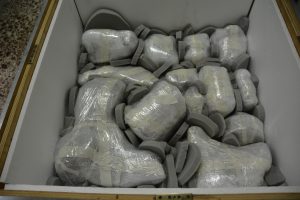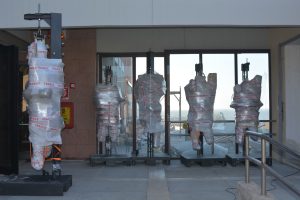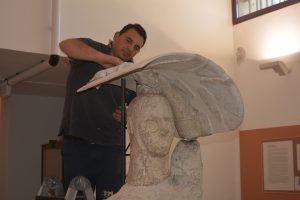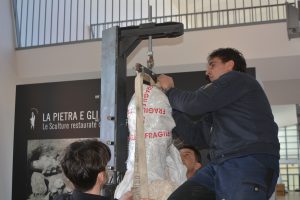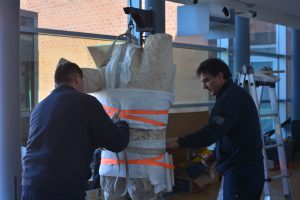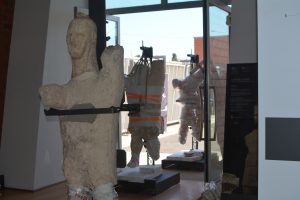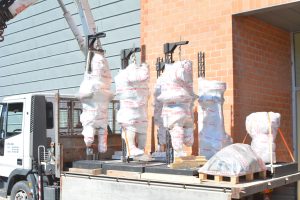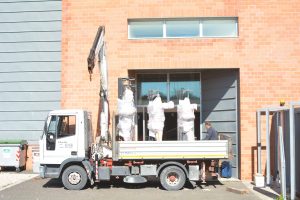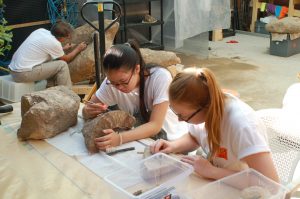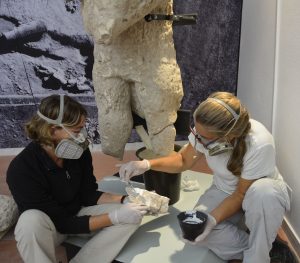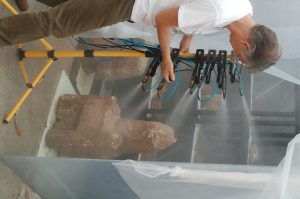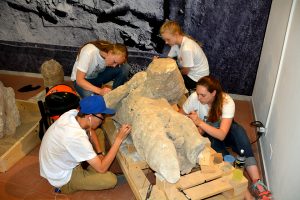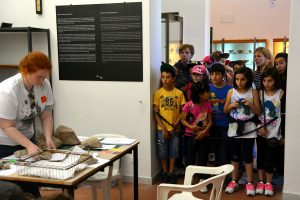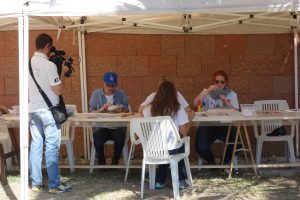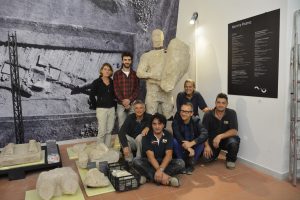Transportation of the sculptures – Mont’e Prama
Between January and February 2014, the Monte ‘e Prama sculptures were moved from the Centro di Conservazione e Restauro of Li Punti (SS) to the museums of Cabras (OR) and Cagliari.
From a mechanical and geometrical point of view, every statue is a specific instance, which can be very easy, as for monolithic and/or small cases, or very complex, as for cases where the figure of the statue is formed by more parte, strictly related, adjoining or even in direct contact.
For this reason a specific sequence of operations for disassembling and reassembling was studied for each case, meant as a statue/support system.
After having considered a variety of possible solutions for packaging the statues, we got to the conclusion that transportation of stone statues of such dimension and characteristics should be avoided as much as possible, or managed by minimizing the handling of the stone material. This is related to the features of the statues themselves, since they are assembled from many fragments and composed of soft stone, thus fragile and with little resistance to abrasion.
Therefore, you have the least impact not when the statue is placed in a sarcophagus, but when you reduce as much as possible the operations of handling, dissembling and reassembling, necessary for transportation and later collocation on support.
Consequently, considering that the statues were to be moved on a relatively short distance by road, we decided to use a packaging method designed for the transportation by truck and for manual handling in the internal areas of origin and destination.
The idea consisted in lifting slightly the stone mass from the metal support and buffering it on the framework with soft wood and other materials that, while having high mechanical resistance, may reduce contact pressure and protect the stone from abrasion. Finally the stone was secured to the metal framework with belts and PET film, to reach a complete adherence to the metal support.
In this way the stability of the statue on the framework is way higher than that of the museum collocation, and there are no catching or pressure points that may break or damage the stone.
Therefore, the same framework has become an excellent support for transportation, taking advantage of the mechanical and geometrical features of the platform and of the lattice pillar. Because of its own structure, the support acts as a buffer for movements on the horizontal level.
Thus, it was enough to place the statues on a track, having the supports turned backwards to the direction of driving, two by two, and to link the metal-edged platforms both in a longitudinal and diagonal ways, so that the stability of the single support is ensured by the integrality of the whole system.
For the heavier statues, we used tie-beams of rope to minimize the bending stress of the lattice pillar in the case of braking.
The whole system was finally blocked within the truck with wooden wedges stacked to the sides.
The detached parts, related to the main statue and mounted on the support by little arms, were detached and placed in custom-designed and custom-built crates, that were transported as for the supports.
Finally, special accessories have been designed to be installed on the supports to help lifting and buffering the statues.
Once moved to their final display location, the statues were unpackaged, freed from all the protective layers of the packaging, and placed again on the supports.
Before undertaking the tightening of the bolts and pressers, the necessary maintenance of the metal supports was undertaken, as well as the replacement of all the soft contact materials.
After lowering the statue and securing it to the support, all the necessary aesthetic treatments were undertaken.
1. Packaging the sculpture for transportation
2. Packaging the sculpture for transportation
3. The sculptures still at the Centre in Li Punti
4. The sculptures on the truck
5. The sculptures on the truck
6. Detached parts were packed separately in custom-built crates
7. One of the metal supports
8. Reassembling the statues at destination
9. The statues on display in the museum of Cabras
